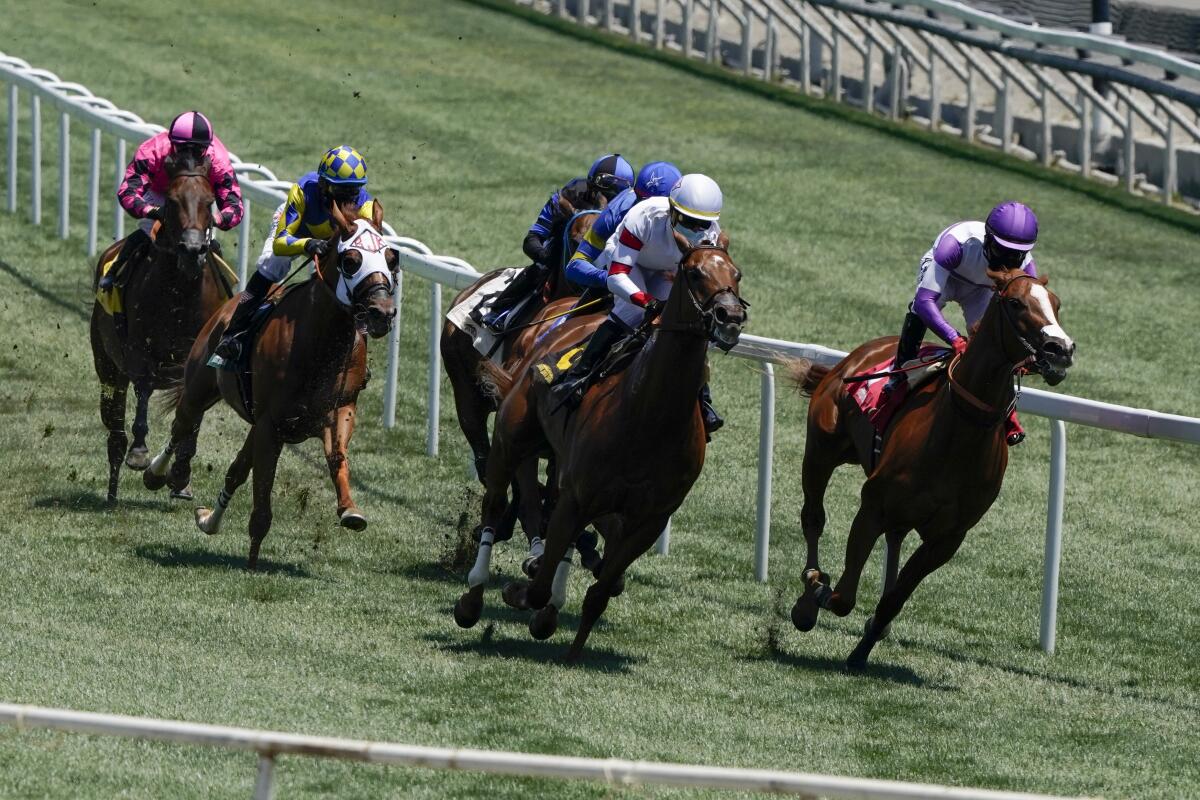Congress passes act to standardize safety rules within horse racing

- Share via
The Horseracing Safety and Integrity Act was passed by the Senate and House of Representatives on Monday as part of the year-end federal funding bill and COVID-19 rescue package. It will become law when signed by President Trump in the next couple of days.
The act hopes to standardize medication and safety rules in horse racing nationwide. The Stronach Group, which owns Santa Anita; the New York Racing Assn.; and Churchill Downs Inc. all supported the measure, as did independent tracks such as Del Mar and Keeneland. The United States Anti-Doping Agency (USADA) would oversee testing and medication violations.
The HSIA was six years in the making, started in the House by Paul Tonko (D-N.Y.) and Andy Barr (R-Ky.). However, the bill never gained enough traction to become law until this year. On Aug. 31, at a news conference in Lexington, Ky., state racing organizations praised Sen. Mitch McConnell (R-Ky.) as he agreed to endorse a bill that would align with legislation in the House. As Senate majority leader, McConnell can bring a bill to the Senate floor or keep it from doing so. His sign-on was vital to its eventual passage.
On Sept. 9, McConnell introduced the bill, which was co-sponsored by Dianne Feinstein (D-Calif.), Kirsten Gillibrand (D-N.Y.) and Martha McSally (R-Ariz.). McSally is no longer in the Senate, losing a special election in November.
On Sept. 29, the House approved the measure in a voice vote. But the bill did not appear on the Senate docket for a vote until it was added to the omnibus bill.
“Our Horseracing Integrity and Safety Act … [puts] the well-being of our horses and jockeys front and center, delivering common sense medication reforms and track safety standards that will restore public trust and confidence,” said Tonko, who represents the district that includes Saratoga Race Course in New York. “I am delighted to see our legislation finally reach the winner’s circle and I look forward to ensuring a strong implementation of these new standards so that the sport of horse racing can thrive for generations to come.”
The bill also hopes to bring national transparency in the area of horse fatalities.
“It’s important that we establish national standards for horse racing in this country,” Feinstein told The Times before the passage of the bill. “While some states like California have been relatively aggressive in instituting stronger safety measures, other states have lagged behind.
“For example, when the problems started at Santa Anita last year, we had a very difficult time finding reliable information on horse fatality rates at other racetracks because each state reports that information differently or not at all. To make progress on protecting racehorses, we need to have consistent information and high standards throughout the country.”
Spielberg defeats The Great One by less than a nose to claim victory for Bob Baffert in the Los Alamitos Futurity.
This action would, in most ways, supplant some of the authority of the 38 state agencies that oversee racing. It is unclear whether any states will challenge the law as unconstitutional based on states’ rights.
While the Act is said to standardize rules nationwide, it is the belief that states could impose more strict regulations, so there would only be a minimum standard rather than a national standard.
Funding for managing the new agency that would oversee racing would have to be paid for by the states. Specifics are still lacking. Scott Chaney, executive director of the California Horse Racing Board, estimated it could cost the state between $1 million and $1.2 million per year. Because the CHRB relies mostly on mutuel handle for its funding, the money would likely come from owners, who would have to pay an additional $30 to $40 to start a horse in a race.
Those figures are just guesses at this point, as the Act is more of a concept than a plan at this time. It would take at least a year for any of its measures to be implemented.
More to Read
Go beyond the scoreboard
Get the latest on L.A.'s teams in the daily Sports Report newsletter.
You may occasionally receive promotional content from the Los Angeles Times.












